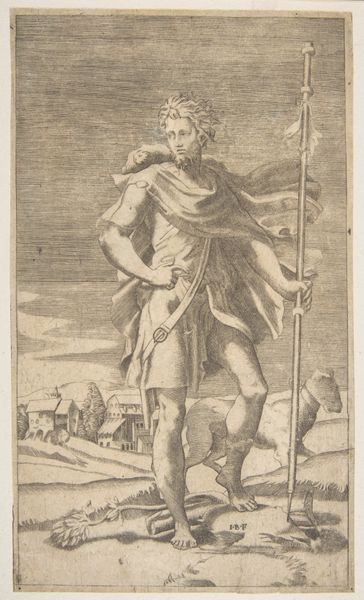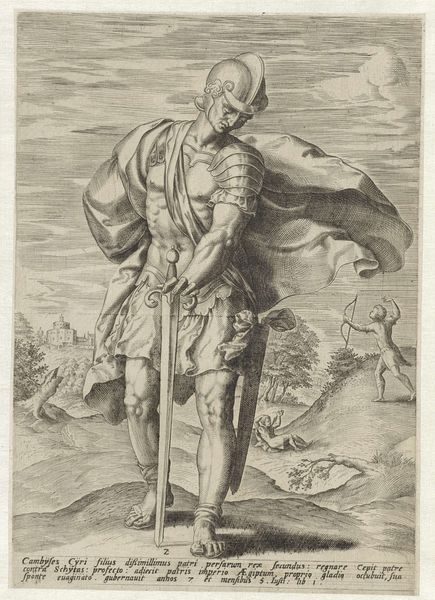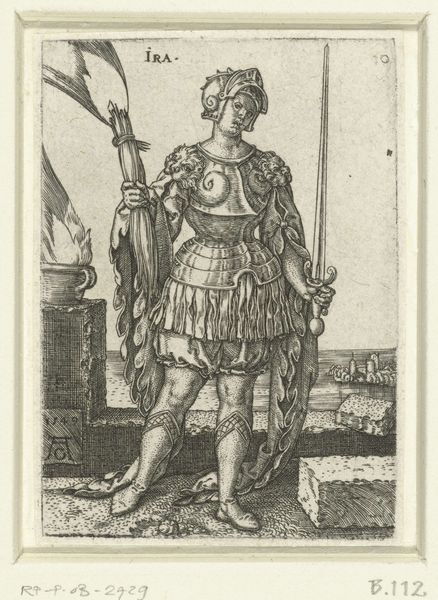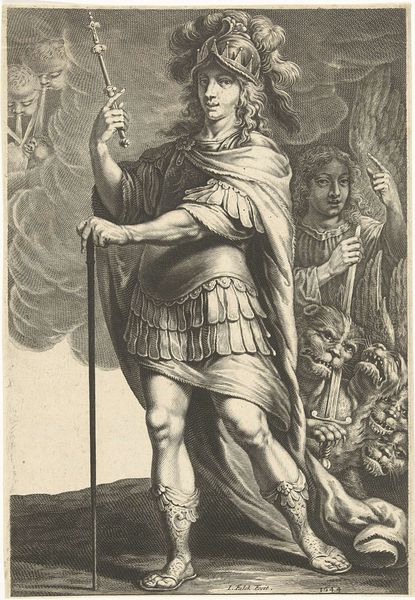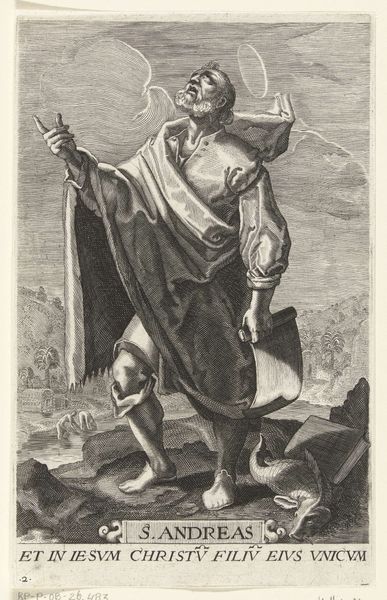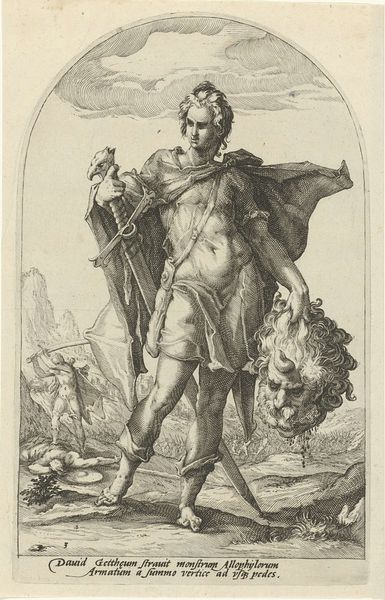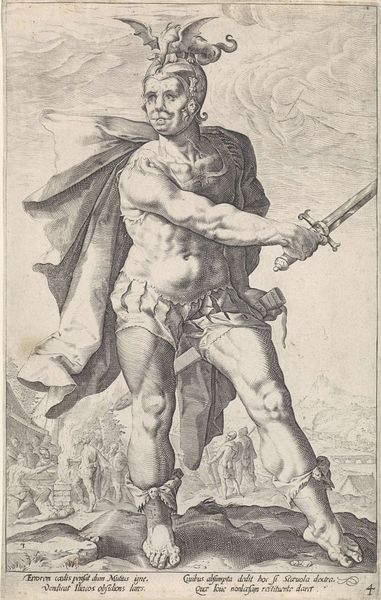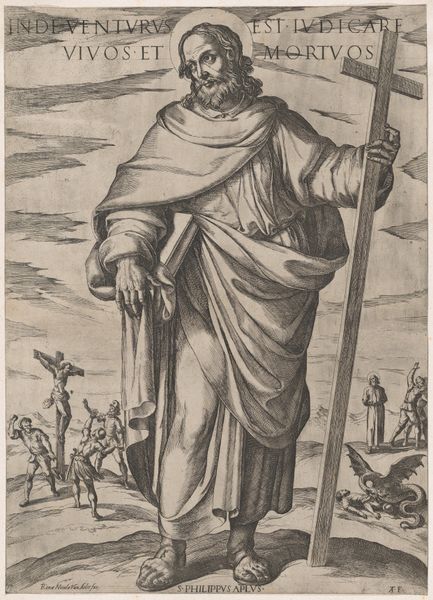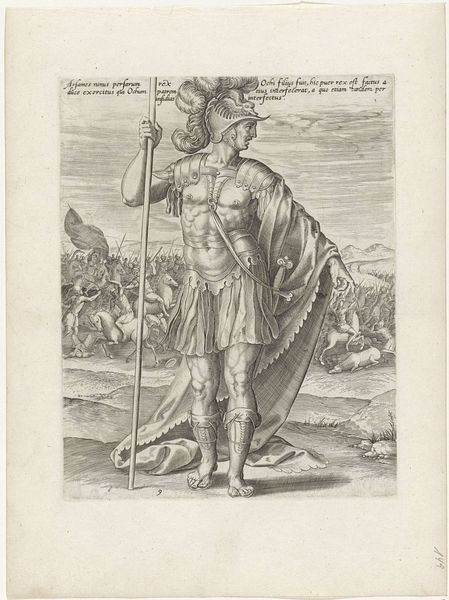
print, engraving
# print
#
figuration
#
history-painting
#
italian-renaissance
#
engraving
Dimensions: height 248 mm, width 145 mm
Copyright: Rijks Museum: Open Domain
Giulio Bonasone created this engraving, Heilige Rochus, in the 16th century, and it's now held at the Rijksmuseum. The composition immediately presents a central figure rendered with meticulous detail, set against a more loosely defined landscape backdrop. The engraving’s formal structure hinges on a contrast between the detailed rendering of St. Roch and the softer treatment of the background. Bonasone uses line work to articulate form, with the density and direction of the lines defining the contours and textures of the saint's body and garments. The formal arrangement invites a semiotic reading: the saint, with his symbolic staff and the revealing bubo on his leg, stands as a signifier of faith and resilience. The architectural elements in the background, barely delineated, act as a visual counterpoint, suggesting a world from which the saint is both a part of and apart from. Ultimately, Bonasone's formal choices serve to elevate the thematic content, transforming the material reality into an essay on belief and transcendence.
Comments
No comments
Be the first to comment and join the conversation on the ultimate creative platform.
